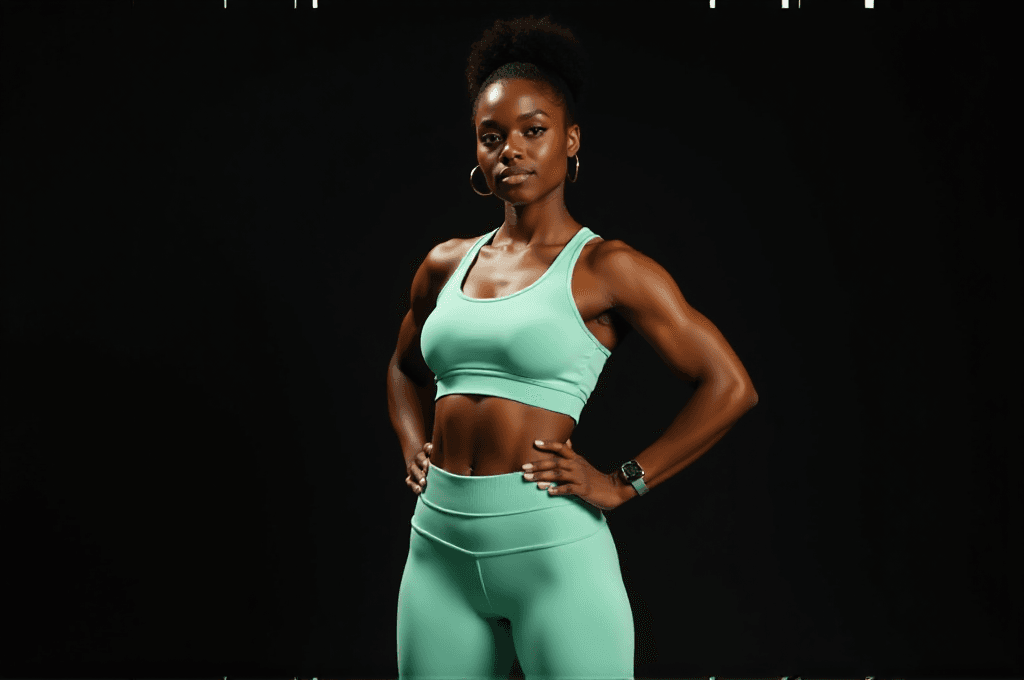
As a fabric specialist working with global apparel brands, I’ve been asked this question more times than I can count: What exactly is nylon spandex material—and why is it everywhere?
It’s more than just a stretchy textile. Nylon spandex is a carefully engineered fabric blend that has reshaped the way we design activewear, swimwear, shapewear, and even fashion.
In this article, I’ll break down its composition and show you where it fits best in modern garment production.
What Is Nylon Spandex Material Made Of?
The Two Main Components: Nylon and Spandex
Nylon spandex is a blend of two synthetic fibers—nylon, also known as polyamide, and spandex, often called elastane. Each brings something essential to the table:
- Nylon is known for its durability, abrasion resistance, and smooth handfeel. It’s lightweight yet strong, and it handles moisture better than polyester.
- Spandex is all about stretch and recovery. It can stretch up to 5–7 times its original length and snap back without losing shape.
Together, they form a fabric that’s not only flexible but also resilient and comfortable—ideal for garments that need to move with the body.
Typical Composition Ratios in Fabrics
Over the years, I’ve worked with various blends depending on the final application. Some of the most common ratios I’ve encountered include:
- 80% nylon / 20% spandex – A balanced blend for leggings, shapewear, and athletic tops.
- 85% nylon / 15% spandex – Popular in yoga wear and sports bras; adds firmness.
- 90% nylon / 10% spandex – Ideal when comfort is key, such as in loungewear or second-skin garments.
These ratios aren’t just arbitrary. A higher spandex content usually means more flexibility, but may reduce opacity or structure. Understanding this balance helps me advise clients on the right material for the right product.
Additives and Finishes in Nylon Spandex
Beyond the basic blend, suppliers often apply special finishes to elevate performance:
- Moisture-wicking treatments for activewear
- Anti-bacterial or anti-odor finishes for underwear and base layers
- UV protection for outdoor and swim apparel
- Brushed, matte, or glossy surfaces to change the feel and look
These enhancements can make a huge difference in the end-user experience—and in your brand’s value proposition.

Where Is Nylon Spandex Material Commonly Used?
Activewear and Sportswear
This is where nylon spandex shines. I work with fitness brands that rely on it for:
- Leggings that don’t sag
- Sports bras that support and stretch
- Tops that move with the body and resist sweat
Its elasticity and sweat-handling ability make it a performance must-have.
Swimwear and Beachwear
In swimwear development, chlorine resistance and shape retention are key. Nylon spandex holds up in salt water, pool chemicals, and repeated stretching.
From bikinis to surf suits, it delivers sleek aesthetics without compromising functionality.
Intimate Apparel and Shapewear
When comfort and stretch are non-negotiable, nylon spandex is the go-to.
- Seamless panties
- Compression bodysuits
- Maternity bras
I’ve seen how this fabric can mold to the body, provide support, and feel like a second skin.
Athleisure and Fashion
Fashion-forward clients love nylon spandex for its form-fitting silhouettes. It’s now widely used in:
- Bodycon dresses
- High-stretch trousers
- Layering pieces for streetwear and luxury fashion
With the rise of athleisure, nylon spandex sits at the intersection of fashion and function.
Medical, Industrial, and Niche Uses
Beyond fashion, nylon spandex also plays a role in:
- Compression sleeves and socks
- Joint braces and support wear
- Post-surgical garments
- Even performance costumes and cosplay suits
Its adaptability is one of the reasons it’s such a valuable part of my sourcing toolkit.
Conclusion
For any apparel brand or garment developer, nylon spandex is more than just a fabric—it’s a flexible foundation for performance, comfort, and innovation.
Understanding how it’s composed helps me make informed decisions when sourcing or designing. Whether I’m developing technical sportswear or luxury shapewear, nylon spandex consistently delivers on stretch, strength, and style.
If you’re building a new collection or optimizing your supply chain, I’d encourage you to take a closer look at this fabric. It’s likely already a hero behind many of your best-performing garments—and with the right specs, it could be your next competitive edge.
